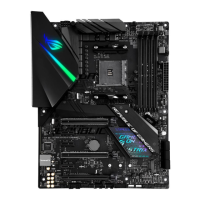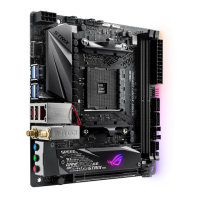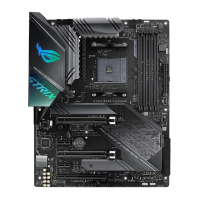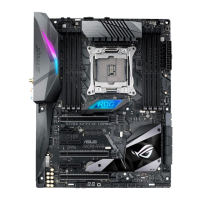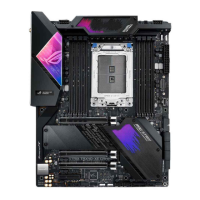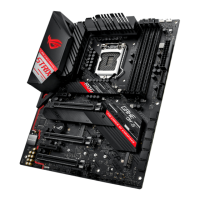4-2
Chapter 4: RAID Support
Chapter 4
4.1.2 Installing Serial ATA hard disks
The motherboard supports Serial ATA hard disk drives. For optimal performance, install
identical drives of the same model and capacity when creating a disk array.
To install the SATA hard disks for a RAID conguration:
1. Install the SATA hard disks into the drive bays.
2. Connect the SATA signal cables.
3. Connect a SATA power cable to the power connector on each drive.
4.1.3 Setting up RAID from RAIDXpert2 Configuration
Utility in UEFI BIOS
You must enable the RAID function in the BIOS Setup before creating RAID set(s) using
SATA hard disks :
1. Enter the BIOS Setup during POST.
2. Go to the Advanced menu > SATA Configuration, then press <Enter>.
3. Set the SATA Mode item to [RAID].
4. Go to the Boot menu > CSM (Compatibility Support Module) > Launch CSM, then
set the item to [Disabled].
5. Save your changes and exit the BIOS Setup, then enter the BIOS Setup again.
6. Go to the Advanced menu > RAIDXpert2 Configuration Utility, then press <Enter>
to display the RAIDXpert2 conguration utility menu.
Refer to Chapter 3 for details on entering and navigating through the BIOS Setup.
Due to chipset limitation, when SATA ports are set to RAID mode, all SATA ports run at
RAID mode together.
Creating a RAID set
To create a RAID set:
1. From RAIDXpert2 Configuration Utility > Array Management, select Create Array
and press <Enter>. The following screen appears:
2. When the RAID Level item is selected, press <Enter> to select the RAID level to
create, and then press <Enter>.
3. Under Select Physical Disks, press <Enter>. The following screen appears.
You can select SATA, SSD or both. Turn ON the disks you want to include in the RAID
set and select Apply Changes, then press <Enter>.

